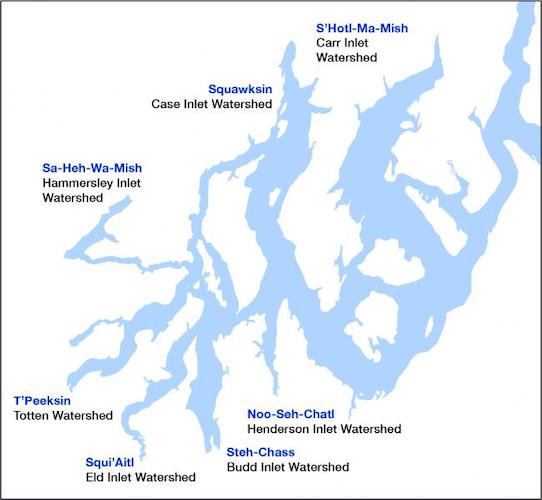SPSCC's Native Land Acknowledgement
We Are On Indigenous Land.
South Puget Sound Community College is located on the ancestral lands of the Steh-Chass band of the Squaxin Island Tribe and Nisqually Indian Tribe, who have long been stewards of the region’s waters, plants, and animals. The southernmost point of the Salish Sea, these lands were—and still are—a place of gathering, trade, and community for many Coast Salish peoples. We recognize that all who are not Salish peoples are visitors here. We commit to join these peoples to share their history, build relationships, increase representation, and restore the living world around us.
Squaxin Island Tribe - People of the Water
The Squaxin Island Tribe includes the descendants of maritime people who lived along the shores and watersheds of the seven southernmost inlets of Puget Sound (historically called the Salish Sea). The Squaxin Island Tribe is comprised of seven bands of Indigenous people who were placed on a single reservation called Squaxin Island in 1854 (read more about the Medicine Creek Treaty below).
Steh-Chass
Olympia sits on the shores of Budd Inlet, historically known as Steh-Chass ("STAY-chaass"), titled after the band of People who lived there since time immemorial.
The additional six bands of the Squaxin Island Tribe are:
- Noo-She-Chatl - lived on the shores of Henderson Inlet (northeast Olympia)
- Squi-Atl - lived on the southern shores of Eld Inlet (west Olympia)
- T-Peeksin - lived in the Kennedy Creek and Totten Inlet watershed (near the Thurston/Mason County line)
- Sah-heh-Wamish - lived along the shores of the Oakland Bay and Hamersley Inlet watershed (Shelton)
- Squawksin - lived on the shores of Case Inlet watershed (Allyn)
- S'Hotl-Ma-Mish - lived on the shores of Carr Inlet (Purdy)

